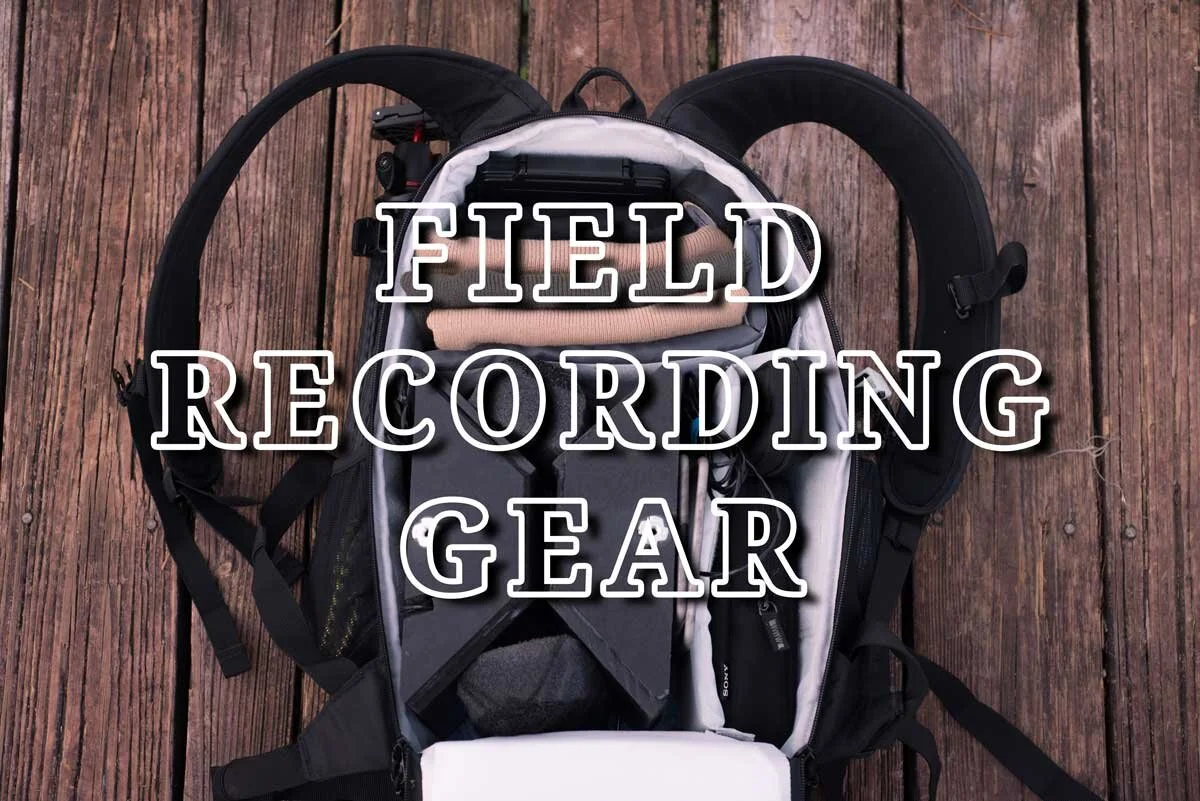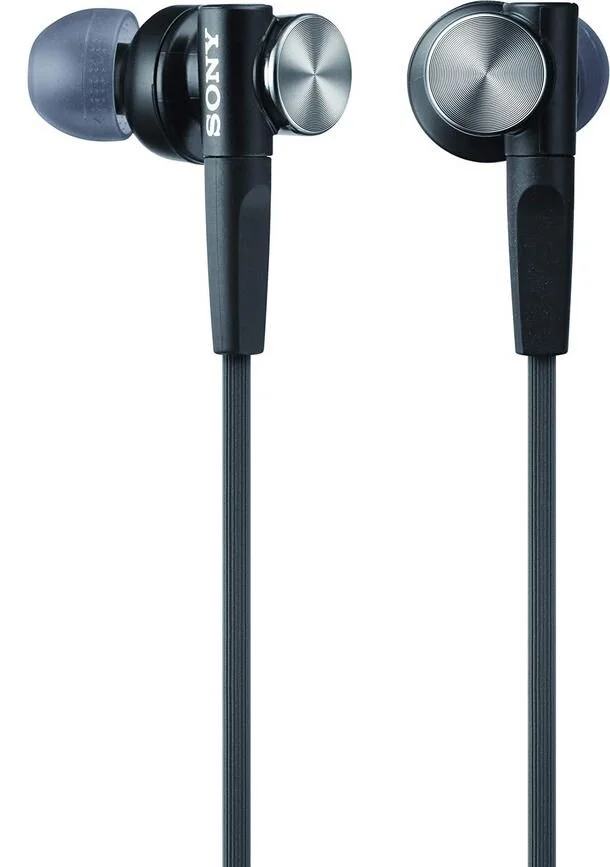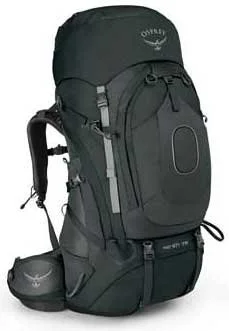My Field Recording Gear
Check out what equipment I use and trust in the field.
I frequently get asked about what gear I use for recording nature sounds. To answer those questions, I thought it would be a good idea to create this page.
All equipment listed here was purchased by me and has made it into my field recording bag. Some pieces I’ve had for years, while others are newer.
Either way, each item has proven itself to me and I stand behind every product here.
Table of Contents:
• Field Recorders • Microphones • Headphones • Backpacks • Tripod • Accessories
Field Recorders
Since starting my field recording journey, I’ve used many different field recorders. Here’s the full list:
Tascam DR-40
Tascam DR-05X
Olympus LS-10
Zoom H1n
Zoom H5
Zoom F3
Sony PCM-D100
Sound Devices 702T
Primary: Zoom F3
The Zoom F3 is my main field recorder. I own two of them. One for my Lewitt rig and another for my Sennheiser MKH 8020s.
I love how small it is, its ability to be powered by an external bank via USB-C, and how quiet the preamps are.
I most often use the F3 to power my Lewitt 540 SubZero SASS, and occasionally a LOM Geophone.
As an owner since early 2022, the F3 has yet to let me down. It’s built tough and 32-bit float has been a gamechanger, especially for drop rigs.
On Me At All Times: Sony PCM D-100
For impromptu recordings, I always keep my Sony D100 in my pocket. In a few seconds, I can have it powered on and recording for those surprise encounters.
The included wind protection is good under 10mph. I usually don’t record when wind speeds are above 5mph, unless I want to capture wind sounds, so this has been more than adequate for me.
Read more about the D100 in my article about the Best Handheld Recorders.
PRO:
Super quiet preamps + internal mics
Dials for gain and headphone volume
Only 3 seconds from “off” to “recording”
CON:
Backlight not dimmable
Wind protection difficult to put on
High Risk: Olympus LS-10
I use an Olympus LS-10 to record ambiences with my SASS microphone when conditions are too wet or risky to use my Sound Devices 702T setup.
Despite having been released in October, 2001, the LS-10 is still one of the quietest handhelds ever made.
Its aluminum body resists handling noise and I use it handheld to record myself walking in the woods. I also use it for drop-rigs.
PRO:
Very quiet preamps + internal mics
Aluminum body
Comfortable to hold
CON:
20 seconds from “off” to “recording”
Only 1 low cut filter option
Only supports 16GB cards
Difficult to find for sale
If you’re searching for one of these for sale with no luck, try extending your search for the LS-11, 12 and 14 models. These newer models have the same internals as the LS-10. Click here to check eBay.
Special Circumstances: Tascam DR-05X
After reviewing the DR-05X and Zoom H1n, I favored the H1n because it had less self-noise. However, a firmware update from Tascam has earned the DR-05X a spot in my bag.
In 2020, Tascam released a firmware update for the DR-05X that added a programmable timer function. This new feature allows you to program scheduled recordings.
You can program the Tascam to start and stop recording at specific times, and can also choose to repeat the cycle everyday or just once.
I use this feature when I find a good drop-rig location during a day of exploring. Most locations are too noise polluted to capture any usable audio during the day so I’ll setup a drop-rig with the Tascam and program it to start recording in the evening.
Now, I could do this with my other recorders, but I would have to start the recording before walking away. Doing do would record a lot of noise pollution and cause the batteries to die before morning. With the Tascam, I can record the evening, night, and dawn chorus before the batteries die.
Of course I could still make it work (and I have) with my other recorders, but this requires me to setup the drop-rig in the evening/night. I don’t know about you, but hiking deep into the wilderness alone at night is not my favorite activity. The Tascam allows me to capture these locations without risking getting lost or eaten by bears ☺.
Microphones
Primary Microphones: x2 Sennheiser MKH 8020s
With only 10dBA self-noise and moisture resistance, the MKH 8020s are the best microphone choice for almost any natural soundscape.
I use them installed in a SASS for ultra-realistic, 3D recordings.
Made by hand in Germany, they’re almost always out of stock, especially for matched pairs.
I waited 3 years before finally finding a set for sale. They’re expensive but worth it for low-noise, nearly waterproof performance.
For Extremely Quiet Landscapes: x2 Lewitt 540 Subzero
The Lewitt 540 Subzero microphones have the lowest self-noise available at only 4dB.
I use them for capturing extremely quiet locations: deserts, canyons, and most winter locations, especially at night.
Although they are more susceptible to moisture and humidity than RF-biased condensers, I haven’t had any problems leaving them out all night and exposing them to morning dew and high humidity.
However, I probably wouldn’t bring them to the Amazon…
Parabolic: Telinga Modular
Telinga is the world’s best manufacture of parabolic microphones. The Modular is their latest iteration and released in 2021.
The Modular doesn’t come with a microphone and is designed to be used with short shotgun mics or EM272 capsules.
I use the stereo foam insert with a pair of EM272 capsules with amazing results and incredibly low noise.
It includes a Rycote blimp and furry windshield. The furry windshield is only needed when recording with winds greater than 25mph.
I also use a “windcoat” to keep bugs out of the dish and a tripod adapter for hands-free use to eliminate handling noise.
DIY SASS Microphone
Early on in my field recording career, I stumbled on a great article by Vicki Powys on how to create a rig that rivaled setups costing thousands of dollars. I used her plans to create a modified version of the “SASS-Lite Narrow.”
This microphone is designed to simulate human hearing and captures ultra-realistic audio. Listening to recordings captured with this microphone is an immersive experience in a 3-D soundscape.
The last image shows how I use simple winter hats as wind protection. They work great and are super cheap!
EM272 Stereo Pair
D-Series Hydrophone
The D-Series Hydrophone made by Jez Riley French is a recent addition to my kit.
I got it because I wanted to experiment with underwater recordings and the D-Series was an affordable hydrophone with good specs and reviews.
So far, I’ve been happy its low noise performance and have had a lot of fun investigating underwater sounds.
Headphones
For the Field: Sony MDR-XB50AP
Since I do most of my field recording miles away from civilization, headphones that are small, high-quality, and durable was really important to me.
After researching the best headphones for field recording, the Sony MDR-XB50AP checked all those boxes.
I have now owned my pair for over 3 years and they are still in great shape. I love how comfortable the silicone tips are and how well they seal my ear canal from ambient noise.
This lets me hear what my microphones are really recording, and allows me to make small adjustments to my positioning to get the perfect balance.
For Processing: Shure SRH840 Monitoring Headphones
These headphones are amazing. I’ve owned them since 2011 and have had zero issues with them. They come with replacement ear pads, which I replaced in 2018.
I originally purchase them for music production due to their flat response and accurate reproduction. When I started field recording, they were my natural choice for editing and processing sounds.
A testament to how good these headphones are is the fact that Shure still manufacturers them. Released in 2010, these have been loved by audiophiles for over a decade!
I purchased them when they retailed for $300, but now they’re much cheaper and nothing has changed. Check them out here if you’re in need of some seriously reliable headphones ☺
Backpacks
Day Trips: Lowepro Flipside 300 AW II
Unfortunately, their are no purpose-built backpacks for audio gear. After researching camera bags, I settled on the Lowepro Flipside 300 AW II for its affordability, multitude of pockets, and comfortable straps.
I’ve owned the bag since February, 2021, and am very happy with its performance. It has enough storage space for all of my audio gear and extras. Its built-in rain cover makes it impossible to lose and has saved me during two torrential downpours.
Overnight: REI Traverse 32
Although some consider the Traverse 32 a day pack, I’ve found that it has enough room for my camping equipment and some audio gear.
The Traverse 32 fits one SASS microphone, my hydrophone, two recorders, extra batteries, dry bags, and bungee cords along with all of my camping essentials.
Maybe one day I’ll upgrade to a larger pack for longer trips, but for now, the Traverse 32 works for me for two nights in the woods.
Edit: I’ve upgraded to a larger pack! See below ↓
Backpacking: Osprey Xenith 75L
More than double the size of my overnight pack, the Xenith 75L is my go to pack for multi-night trips into the wilderness.
It has enough room for all of my backpacking supplies and field recording equipment with no compromises.
For field recording equipment, I’m able to fit a Sound Devices 702T, x2 Lewitt 540 Subzero mics, x2 Rycote WS AE blimps, x2 Anker power banks and a REED 8070SD for recording accurate dB measurements in the field.
Although Osprey doesn’t manufacture the Xenith anymore, their Aether Plus 70 is almost identical.
Tripod
Carbon Fiber: Benro Slim (TSL08CN00)
After using and loving my aluminum Benro Classic tripod (below) for over a decade, I chose to stick with Benro when shopping for a lighter, carbon fiber tripod.
Weighing only 2.2lbs and folding down to just 20” in length, the Benro Slim is the perfect addition to my backpacking recording kit.
Aluminum: Benro Classic A2580F
This thing is an absolute beast. I purchased it “used” on eBay and have personally owned it for 13 years. I originally purchased it for photography and selected it for its durability and reliability.
Made from magnesium and aluminum, it won’t rust or corrode and is made to stand the test of time.
The legs have 4 sections and each leg can be angled at 3 different settings. I love these features because they enable me to put my recorder anywhere from head height to 6 inches off the ground.
I’ve brought this tripod up 5,500’ peaks and down to the ocean, across the country, and back again.
Benro doesn’t make this specific tripod anymore, but they have released a replacement model.
The Benro TAD28AIB2 has the exact same specifications and build quality as the A2580F. It also comes with a triple-action head similar to the one I have.
Accessories
Field Recording Log Book
My logbook is an essential tool for me out in the field. It allows me to keep track of all of my recording settings, as well as detailed notes about my specific setup and environment.
Recording this information helps me remember what worked and what didn’t so I can get better at field recording, repeat my results, and create better metadata.
I designed this book myself and it is available to you too through the Blurb bookstore.
I’ve written a detailed article about my book, click here to learn more about Field Notes.
Windshields: Rycote Stereo WS AE Blimps
To protect my Lewitt 540 Subzero microphones from moisture and wind, I use two Rycote Stereo WS AE blimps.
Although they’re quite large and expensive, they’re necessary for my work and are excellent quality.
Power Supplies: Anker 10,000 and 26,800mAh
Dry Bags: Sea to Summit 2L
Dry bags are an essential tool for drop-rig recordings. Before leaving your recording unattended, be sure to put your recorder in a dry bag to shield it from the elements and morning dew.
Not only do they protect against moisture, they also provide a neat and tidy way of stowing your gear. This makes camouflaging your setup easier. I’ve found the 2L size bag works best for handheld recorders.
Energizer Rechargeable AA NiMH
Having rechargeable batteries is a must for me. When I was beginning field recording, I used Alkaline batteries but I was wasting so many!
After coming home from a recording trip, my batteries would have 33% remaining. For fear of these batteries dying on my next trip, I would always use fresh batteries. I did this for a couple weeks before researching rechargeable batteries.
I got this pack off Amazon. It includes four 1300mAh and four 2000mAh batteries, plus the charger.
I use the 1300s in my Olympus LS-10s and the four 2000s in my Sony D100.
I’ve had this setup for over a year now and the batteries still charge and perform like new.














